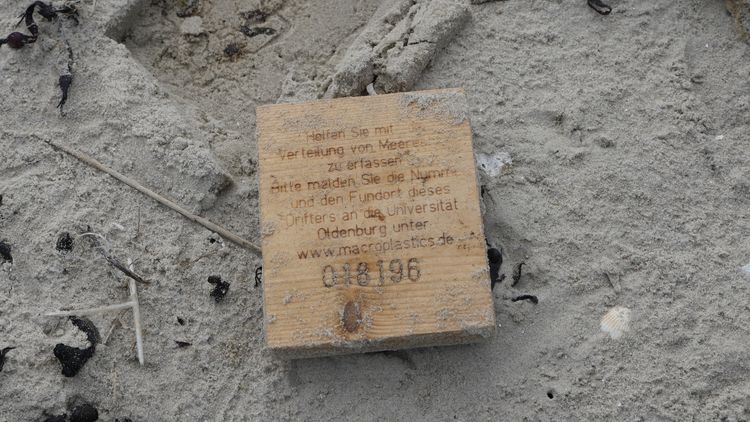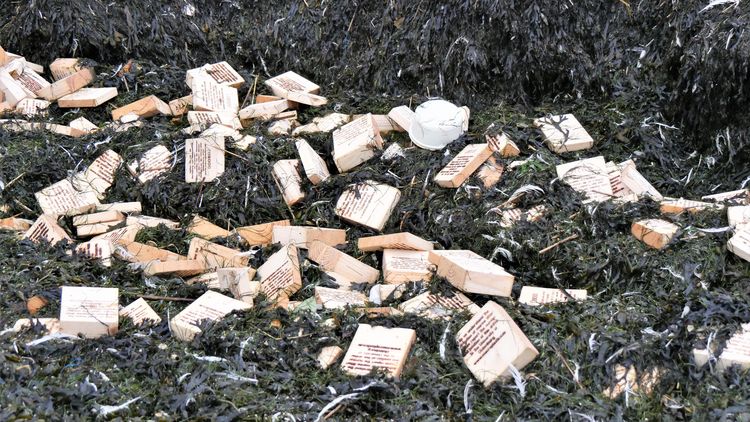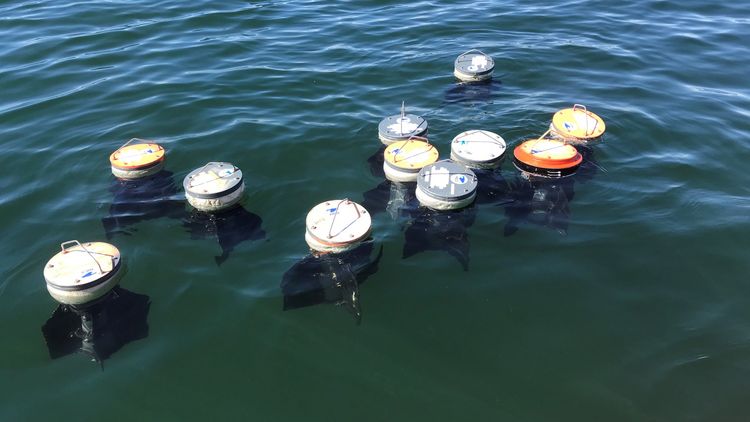Researchers in the "Macroplastics" project studied the dispersal pathways of plastic waste in the southern North Sea for four years. 63,000 wooden plates played an important role – as did citizen scientists.
Where do large plastic items such as shopping bags and disposable bottles which end up in the German Bight come from, and how do they get there? This was the key question addressed by a multidisciplinary team of the University of Oldenburg, Germany. In the research project "Macroplastics in the Southern North Sea – Sources, Sinks and Abatement Strategies", the team conducted a comprehensive study to gain a better understanding of the problem and examine strategies for dealing with it. The researchers also relied on the participation of local citizens to help track the distribution pathways of the plastic debris. An overview of the results has now been published in the journal Frontiers in Marine Science. Two key findings are that there are no areas in the North Sea or the Skagerrak where plastic waste accumulates permanently and that a large proportion of the particles are quickly washed ashore.
Local citizen scientists played a vital part
The team, which was made up of 15 scientists from the fields of marine science, geography and environmental planning began the project in 2016. The researchers employed an interdisciplinary approach to investigate how plastic items with a diameter of more than five millimetres are dispersed in the North Sea. They conducted field experiments and calculated the pathways of virtual litter particles using numerical models. The team also recorded the plastic waste deposited on coastlines, in estuaries and on the seabed and deployed satellite-tracked surface drifters which floated on the sea surface, mimicking plastic debris. In addition, approximately 63,000 biodegradable wooden plates of around 8 by 10 centimetres in size were released from off-shore locations and land-based sites along the coast. Local citizens who came across beached drifters were encouraged to report their find on a dedicated website. An analysis of the various stakeholders including the tourism sector, fisheries, industry and ports was also conducted as part of the study.
By combining their observations and model calculations the team obtained an overview of both the spatial distribution of the litter sources and the role played by different sectors such as tourism and industry. The results confirm that fisheries and municipal solid waste are the main sources of the litter, as previous studies had already shown. A significant portion of the debris comes from the larger municipalities along the North Sea coastline and at the mouths of the Elbe, Weser and Ems rivers. Most of the wooden plates released in rivers was washed ashore while still in the waterways – just under half in the Elbe and almost 90 percent in the Ems. Moreover, the litter that washes up on the coast mainly comes from nearby sources. In the coastal areas of the North Sea the main sources of litter were Germany and the Netherlands, whereas in the open sea most of the plastic particles came from the UK, France and the Netherlands.
The analyses of the dispersal pathways showed that two thirds of the wooden plates released from coastal and riverine locations were washed ashore again within 25 kilometres of the release site. Drifters released off-shore, however, travelled longer distances, with 30 percent floating across more than 250 kilometres before being beached. Members of the public reported finding more than 27,000 drifters via the website – accounting for around 43 percent of those released. "This result underlines the significant role that citizen science can play in generating large data sets," the principal investigator Professor Dr Jörg-Olaf Wolff stresses.
No permanent garbage patches found
Another key finding was that litter particles can remain trapped for extended periods at oceanographic fronts. "These are zones where, for example, freshwater from a river meets salty seawater. Things can often get very turbulent there," explains oceanographer Dr Jens Meyerjürgens from the University of Oldenburg's Institute for Chemistry and Biology of the Marine Environment (ICBM). Together with Dr Marcel Ricker from the Helmholtz-Zentrum Hereon in Geesthacht, he was the lead author of the recently published study. The data from the advanced satellite-tracked drifters showed that the devices often got stuck at these fronts for several days or even weeks, until the wind gained enough force to dislodge them. This meant that more plastic particles were found on the seabed below these fronts than elsewhere. However, the researchers did not detect any permanent garbage patches in the North Sea like those that exist in the Pacific or the Atlantic.
The scientists also examined various strategies for reducing plastic litter inputs. According to the study the most promising step would be for municipalities to ban the use of disposable plastics such as plastic cups and cutlery at large events. Stricter storage regulations at ports would also be a sensible measure since port operations account for around eight percent of the plastic waste in the North Sea. The researchers also see campaigns to raise awareness of the problem as important and emphasize that these efforts should focus on the fishing sector as a major source of marine litter.
Study creates „inceased awareness of the problem”
Overall, the team is happy with the results of the study: "We received a lot of positive feedback on the wooden plates and surface drifters and observed an increased awareness of the problem among the population," says Dr Thomas Badewien, a scientist at the ICBM and one of the lead researchers in the project. These are positive developments that give hope for the future, he added.
The interdisciplinary project team was made up of researchers from the ICBM and the Institute for Biology and Environmental Sciences (IBU) at the University of Oldenburg. The Helmholtz-Zentrum Hereon was among the scientific partners. The project leader was Oldenburg oceanographer Prof. Dr. Jörg-Olaf Wolff. The project received a total of 1.4 million euros in funding over four years from the Lower Saxony Ministry of Science and Culture.






